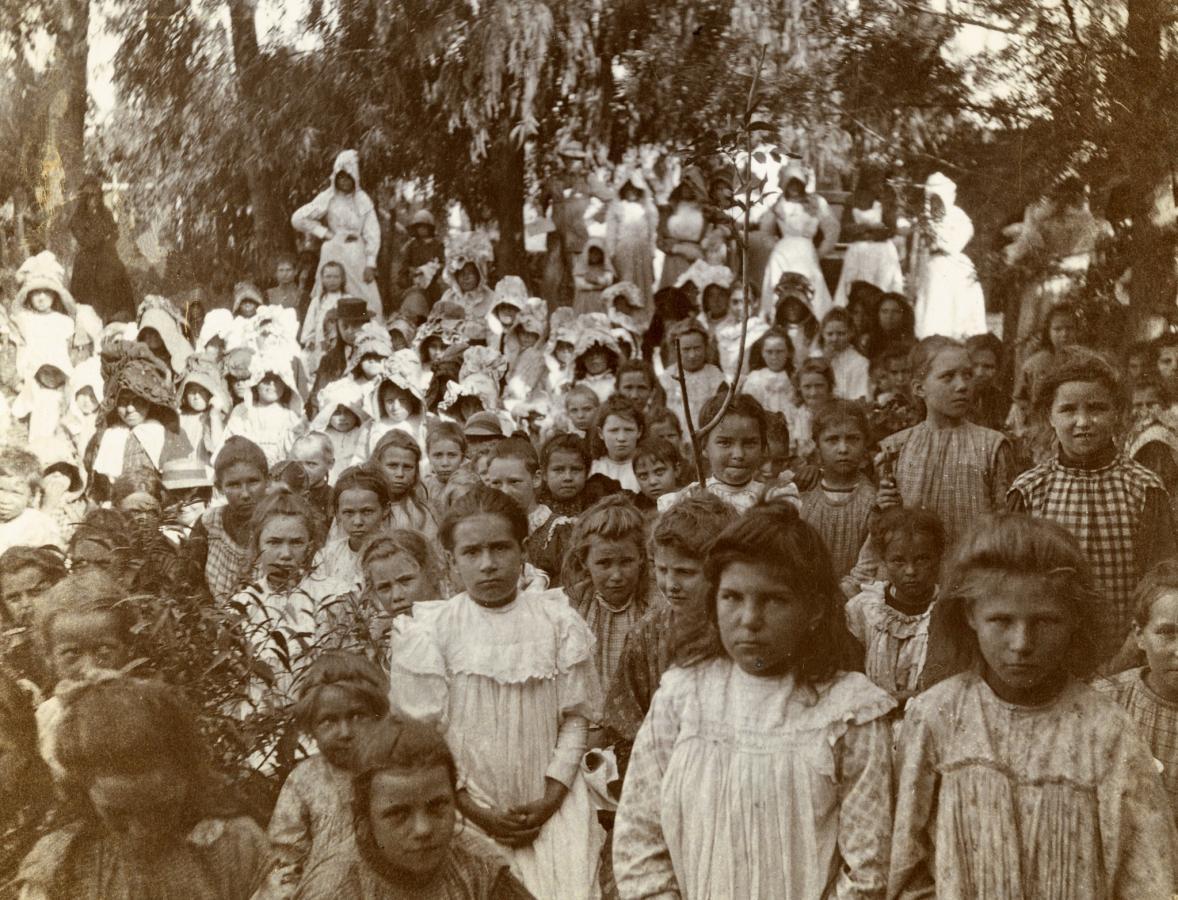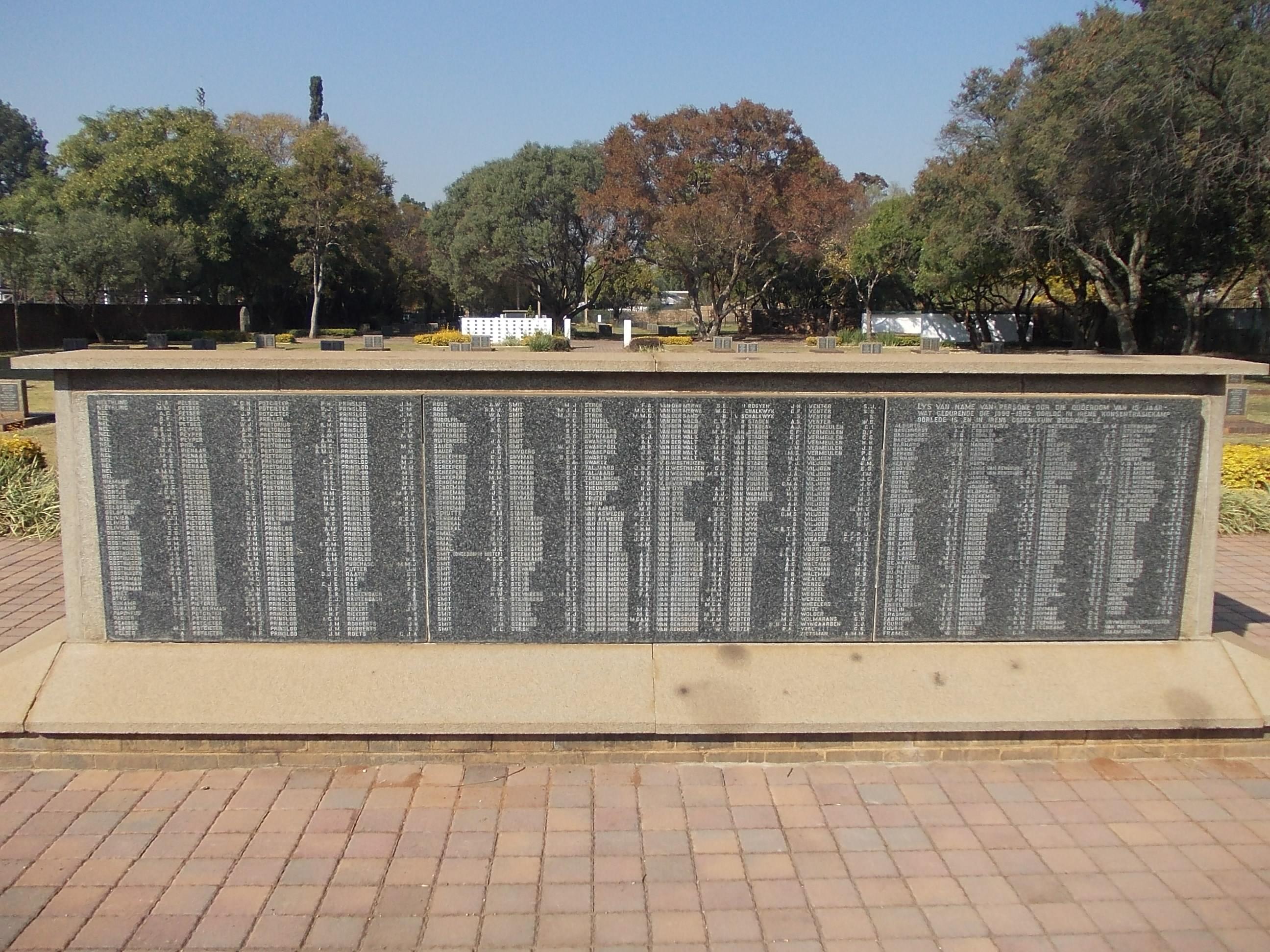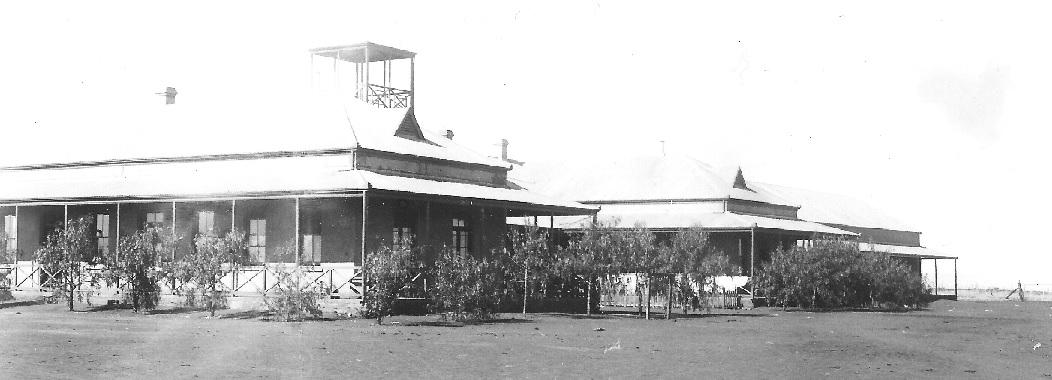
Disclaimer: Any views expressed by individuals and organisations are their own and do not in any way represent the views of The Heritage Portal. If you find any mistakes or historical inaccuracies, please contact the editor.
The Anglo-Boer War (also the South African War, 1899–1902) was one of the most devastating conflicts in South African history, with dire consequences for both combatants and civilians. The British scorched earth policy, implemented to weaken Boer resistance, led to the destruction of thousands of farms, leaving women and children destitute and dependent on British-run concentration camps. These camps were notorious for their overcrowded and unsanitary conditions, leading to malnutrition, disease outbreaks, and an alarming mortality rate. Many of the victims were children whose parents succumbed to illness, starvation, or violence during the war.
By the end of the war, many children had been orphaned. The British colonial administration, faced with the challenge of housing and educating these displaced youth, established orphanages throughout the Cape, Orange River and Transvaal colonies. In the former Zuid-Afrikaansche Republiek, three orphanages were established in Irene (today part of Centurion), (then) Pietersburg (today Polokwane), and Potchefstroom for Afrikaans children. These institutions were meant to provide shelter, education and vocational training for children who had no surviving family or whose relatives were unable to care for them in the aftermath of the war. While ostensibly humanitarian in intent, these orphanages also played a significant role in the broader colonial strategy of anglicisation, which sought to diminish the Boer cultural identity and assimilate the children into British imperial society. This article explores the histories of the Irene and Pietersburg orphanages, shedding light on their conditions, education policies, and long-term impact.
The Establishment of the Orphanages
The Irene orphanage was founded in 1902, shortly after the war ended, while the Pietersburg orphanage followed in 1903. Both institutions were established under the supervision of the British Department of Education, which was responsible for their management and oversight. The orphanages were designed to provide necessities—food, shelter and clothing—to the Afrikaans children who had lost their parents in the war. The Irene orphanage was constructed southeast of the main concentration camp, where wood and zinc dormitories, classrooms, a dining hall, and vocational training areas were established. The Pietersburg orphanage was initially far less developed. When it first opened, children lived in tents that had been used in the nearby concentration camp during the war. It was only later that military buildings were repurposed as dormitories, providing more stable and comfortable housing. Running water was eventually installed, improving sanitation and daily life for the orphans.
A memorial with the names of those who died in the Irene Concentration Camps (The Heritage Portal)
Numbers, Health and Living Conditions
At any given time, the Irene orphanage housed between 60 and 78 children, while the Pietersburg orphanage accommodated between 35 and 45. The fluctuations in numbers were largely due to children being adopted by relatives or well-wishers. Although the concentration camps had been plagued by starvation and disease, the orphanages generally provided better conditions. The children were well-fed compared to their time in the camps, and there were no major disease outbreaks recorded. Local hospitals provided regular medical care, supplying medicine and treatment when necessary. Friends and family occasionally visited the children, helping to maintain a sense of connection to the outside world. Despite these improvements, life in the orphanages was strictly regimented. The children adhered to structured schedules, with their daily routines revolving around education, vocational training, and chores. Boys were taught practical skills such as woodworking, while girls were trained in domestic duties, including sewing and cooking. These skills were meant to prepare them for self-sufficiency, either in employment or in future households.
Education and the Policy of Anglicisation
One of the most significant aspects of the orphanages was their role in the British government's anglicisation policy. Education was conducted exclusively in English, with Afrikaans largely suppressed. The curriculum emphasised British history and imperial values. Teachers were predominantly English-speaking, and the subjects taught were designed to foster loyalty to the British Empire. This policy was deeply controversial. Many Boer leaders feared at the time that their children were being alienated from their cultural heritage and that the orphanages were being used to systematically erase their identity. However, the British authorities justified the curriculum as a means of modernising education in the former republics and integrating Afrikaans-speaking children into a broader, unified South African society under British rule.
The Structure and Daily Life in the Orphanages
The Irene orphanage was laid out in a carefully planned manner, featuring dormitories, kitchens, a laundry, an infirmary, and workspaces for vocational training. The grounds also included gardens, where children were expected to help grow food. Boys were involved in tasks such as carpentry and gardening, while girls were trained in home economics. In Pietersburg, conditions were initially much more rudimentary. The orphanage was housed in repurposed military barracks, with minimal amenities. However, as time passed, the facilities were expanded, and running water was installed. Despite these improvements, discipline in both orphanages was strict, and children had little autonomy over their lives.
Closure and Consolidation
By 1907, the financial burden of maintaining three separate orphanages in the Transvaal colony was deemed unsustainable. The British administration decided to consolidate all three institutions into a single facility in Potchefstroom. Both the Irene and Pietersburg orphanages were shut down, and the children were transferred to the expanded Potchefstroom orphanage, which now housed 252 children. The decision to close the Pietersburg orphanage sparked local resistance. Community leaders feared that the move would deprive the town of a generation of young people and weaken its future labour force. They petitioned the Lieutenant-Governor in Pretoria, sir Richard Solomon, to reconsider the closure, arguing that the orphanage was vital to the community’s social fabric. Despite their efforts, economic and administrative concerns prevailed, and the institution was closed.
Labelled as “orphanage”, this photograph is in the August D’Ange D’Astre collection, a collection of photographs by August D'Ange D'Astre, a photographer who documented life in and around Potchefstroom in the early 1900s. Photograph soured by Lennie Gouws. Click here to read her story on orphanages in Potchefstroom.
The Lasting Impact of the Orphanages
The Irene and Pietersburg orphanages played a complex and multifaceted role in post-war South Africa. On the one hand, they provided care and stability for children who had suffered immense trauma and loss. On the other hand, they were also instruments of colonial policy, systematically anglicising Afrikaans-speaking children and distancing them from their heritage. Today, the physical remnants of these orphanages serve as historical sites, offering insights into a largely forgotten chapter of South Africa’s past. As historians and archaeologists uncover more details about these institutions, we gain a deeper understanding of the intersection between war, colonialism and the experiences of the most vulnerable—their children. The Irene and Pietersburg orphanages stand as stark reminders of the human cost of conflict and the lasting impact of colonial policies on generations to come.
Main image: Children at the Nylstroom Concentration Camp in 1901 during the Anglo-Boer War. Source: LSE Library, Flickr’s The Commons. No known copyright restrictions. Link
Professor Shaw Badenhorst is a zooarchaeologist at the Evolutionary Studies Institute of the University of the Witwatersrand in Johannesburg, South Africa. He earned his PhD in 2009 from Simon Fraser University in Burnaby, Canada, with a dissertation focusing on the zooarchaeology of great house sites once occupied by ancestral Puebloans in the San Juan Basin of the American Southwest. As a zooarchaeologist, he specialises in analysing animal remains (bones and teeth) from archaeological and fossil sites. His research has focused on animal remains from Quaternary sites in southern Africa, including analyses of remains associated with hominins from palaeo-anthropological sites in the Cradle of Humankind and faunal remains from Middle Stone Age sites associated with early modern Homo sapiens.
Further reading:
- Badenhorst, S. 2023. Die geskiedenis van die Pietersburgse weeshuis (1903-1907). South African Journal of Cultural History 37(1):49-69.
- Badenhorst, S. 2002. Explaining the past through history and archaeology: a case study of three selected sites in Irene, Centurion (South Africa). Research by the National Cultural History Museum 11:78-87.
- Badenhorst, S. 2001. ‘n Ondersoek na die oorblyfsels van die Irene-weeshuis en –skool (1902 tot 1907). South African Journal of Cultural History 15(2):41-60.
Comments will load below. If for any reason none appear click here for some troubleshooting tips. If you would like to post a comment and need instructions click here.


